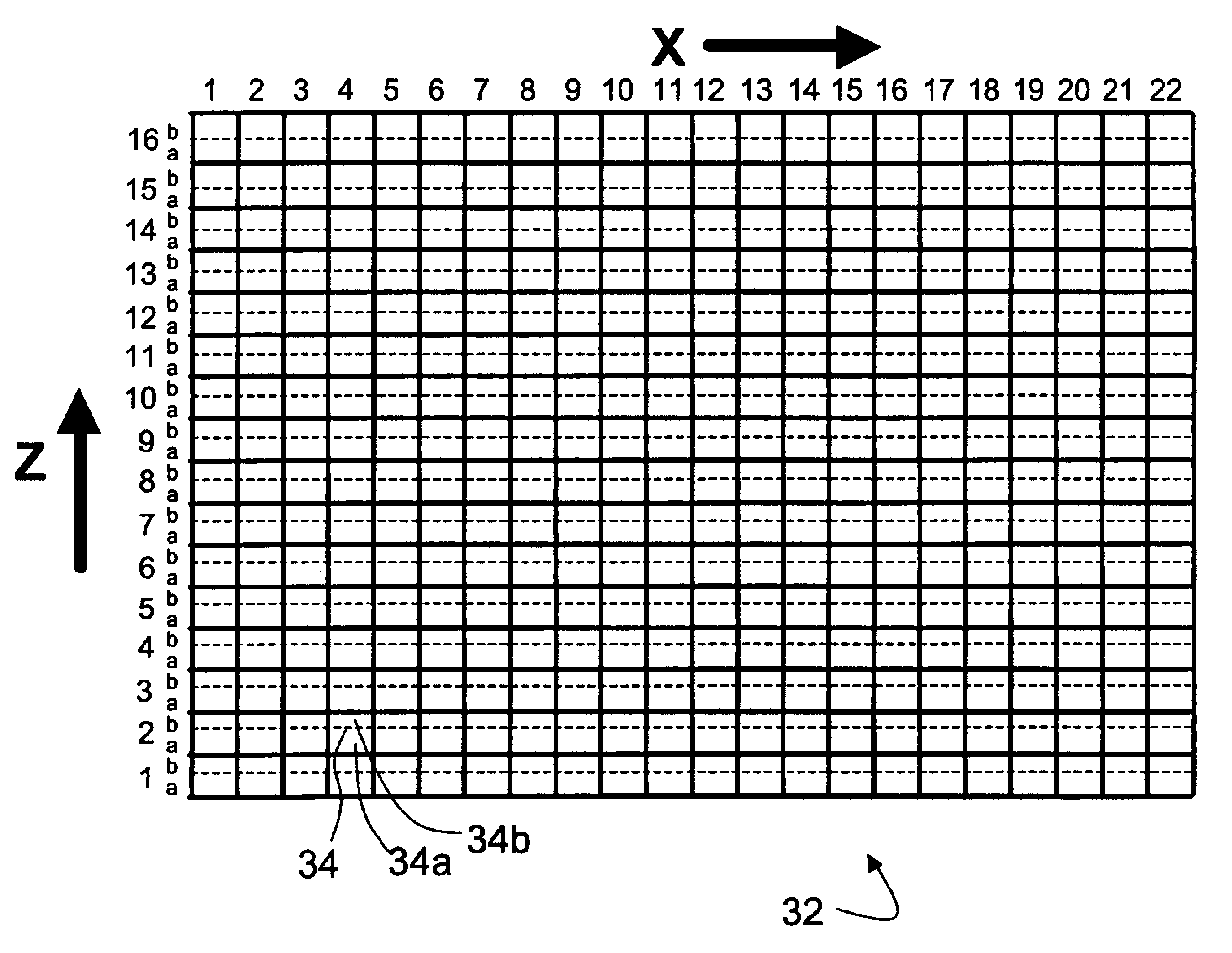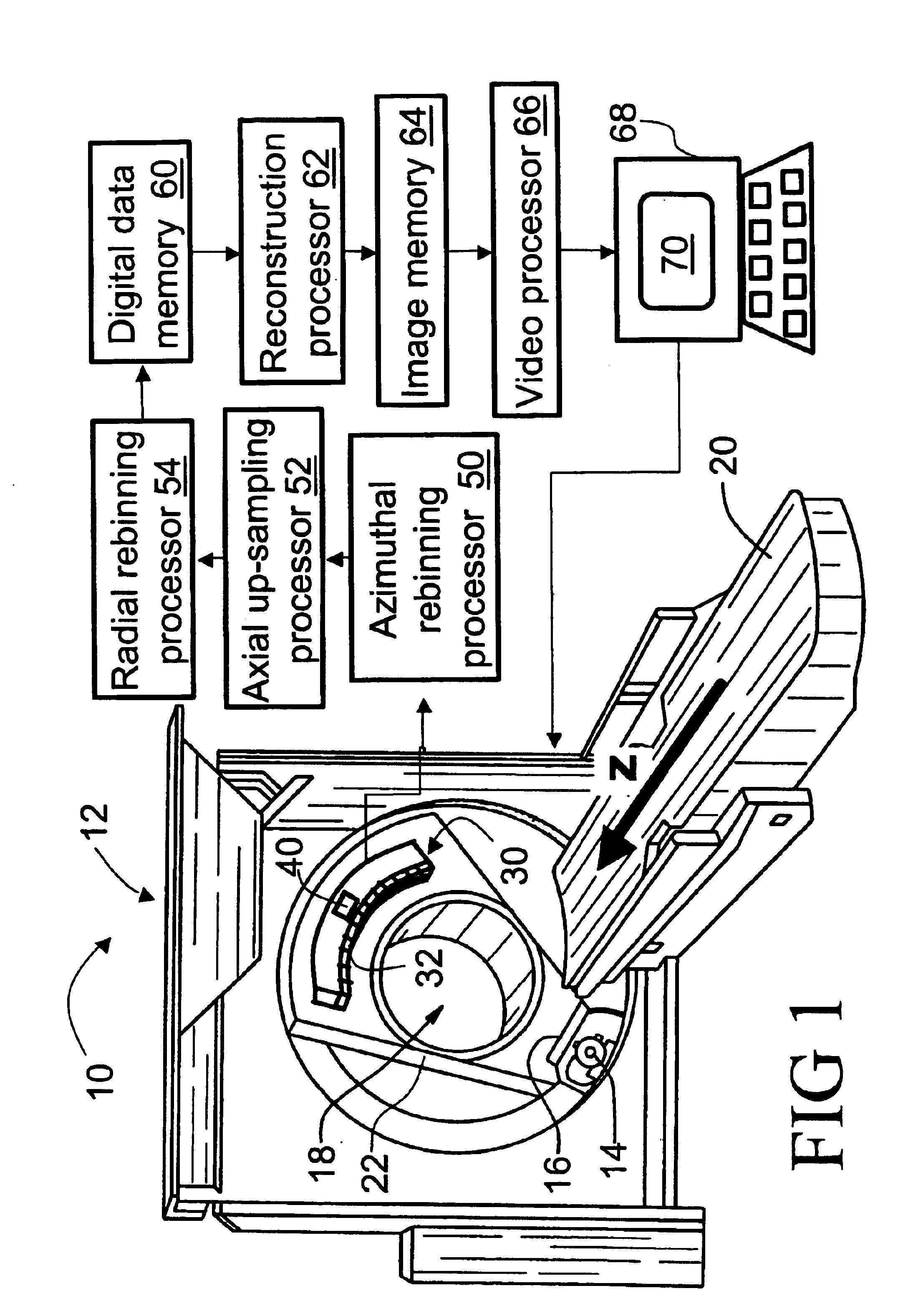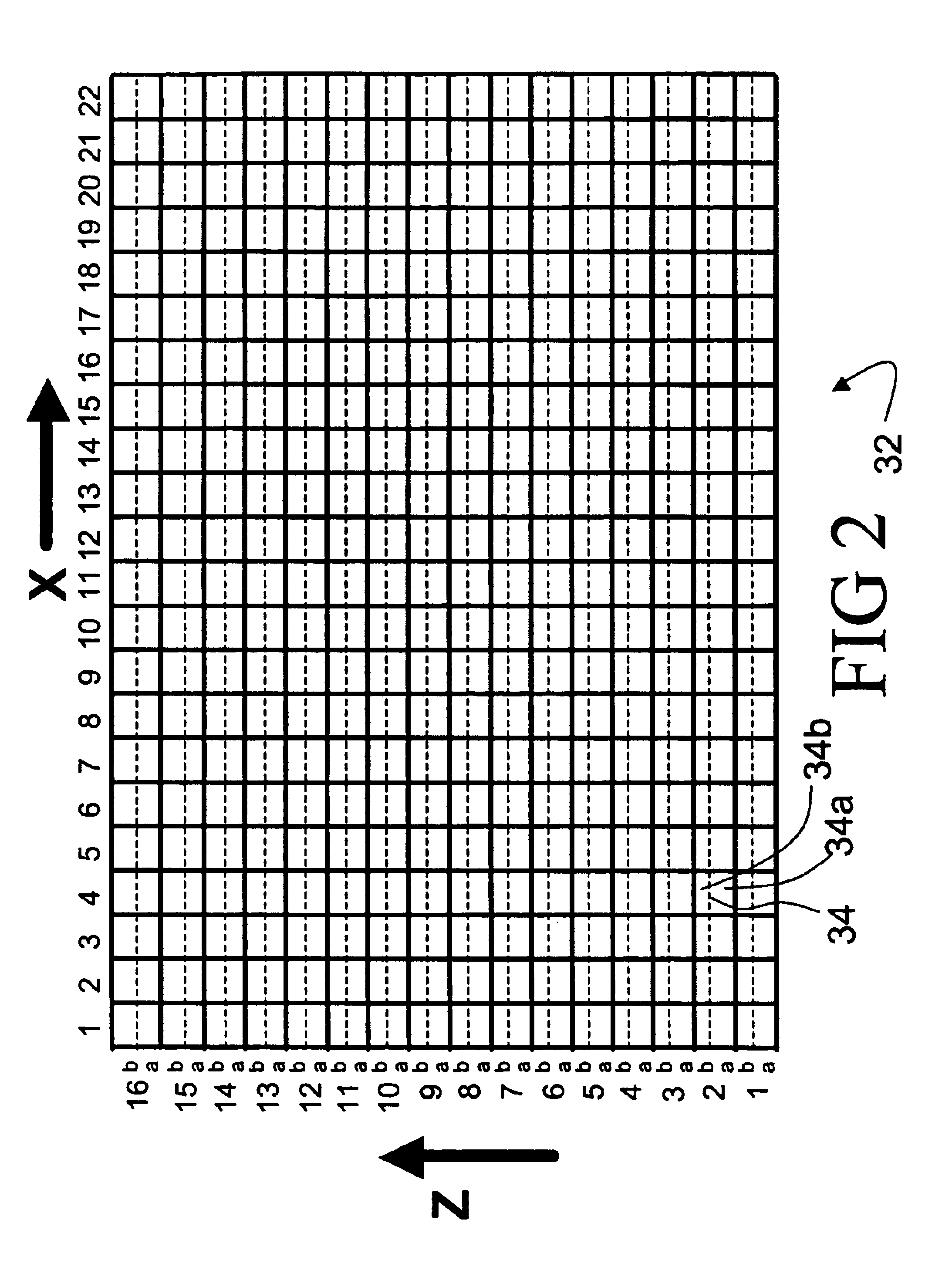Dynamic detector interlacing for computed tomography
a computed tomography and detector array technology, applied in the field of diagnostic imaging arts, can solve the problems of reducing the resolution in the under-sampled direction, reducing the sampling range, and generating image artifacts, so as to increase the sampling range, avoid aliasing and associated image artifacts, and increase the dynamic range
- Summary
- Abstract
- Description
- Claims
- Application Information
AI Technical Summary
Benefits of technology
Problems solved by technology
Method used
Image
Examples
Embodiment Construction
[0025]With reference to FIG. 1, a computed tomography (CT) imaging apparatus 10 includes a CT scanner 12 with an x-ray source 14 and a collimator 16 that cooperate to produce a cone-shaped, wedge-shaped, or otherwise-shaped x-ray beam directed into an examination region 18. A subject (not shown), such as a patient, is arranged on a subject support 20 and placed at least partially into the examination region 18. Preferably, the patient support 20 is linearly movable in an axial or Z-direction while the x-ray source 14 is rotatable on a rotating gantry 22.
[0026]In an exemplary helical imaging mode, the gantry 22 rotates simultaneously with linear axial advancement of the subject support 20 to effectuate a helical orbiting of the x-ray source 14 and collimator 16 about the examination region 18. However, other imaging modes can also be employed, such as a multi-slice imaging mode in which the gantry 22 rotates as the subject support 20 remains stationary to effectuate a circular orbiti...
PUM
 Login to View More
Login to View More Abstract
Description
Claims
Application Information
 Login to View More
Login to View More - R&D
- Intellectual Property
- Life Sciences
- Materials
- Tech Scout
- Unparalleled Data Quality
- Higher Quality Content
- 60% Fewer Hallucinations
Browse by: Latest US Patents, China's latest patents, Technical Efficacy Thesaurus, Application Domain, Technology Topic, Popular Technical Reports.
© 2025 PatSnap. All rights reserved.Legal|Privacy policy|Modern Slavery Act Transparency Statement|Sitemap|About US| Contact US: help@patsnap.com



